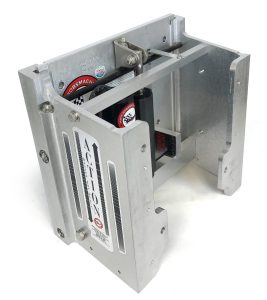Workholding is a make-or-break factor in any CNC milling application. Without secure fixturing, even the most powerful mill loses rigidity and precision. Avoid these common workholding pitfalls on your CNC mill:
Clamping on Deflection Points
Avoid clamping thin or unsupported surfaces of a workpiece. The forces of milling can distort weak areas and cause vibration issues. Clamp on thicker, reinforced sections or close to the machining operation when possible. Supporting the part more closely to the cutting area bolsters stability.
Excessive Overhang
Minimizing overhang off the edges of the table is critical for preventing chatter and poor surface finish. The farther the tool extends to reach the work zone, the greater risk of deflection. Reduce overhang by positioning the workpiece as centrally as possible. Custom fixtures like tombstones also help locate parts smartly.
Inadequate Tool Clearances
Ensure adequate clearance between the cutting tool and fixture components in all necessary tool approach directions. Collision damage can ruin an entire production batch. Failing to model the toolpaths and check clearances is asking for trouble. Program conservatively and leave a safety buffer.
Weak Hold-Down Pressure
Inadequate clamping force leads to workpiece slippage and lost tolerances. Indicators like spring tension pins or load cells confirm sufficient pressure. For parts that shift, try auxiliary hold-downs or incredible tapes. Match clamp sizes and provide full support across the work surface.
Misaligned Fixtures
Confirm parallelism between fixtures, vises, and the machine table. Misaligned elements stress tools and cause uneven milling. Precision-ground parallels under fixtures and indicating vise jaws in helps achieve consistent orientation. Level vise setups with test indicators.
Unbalanced Forces
The ideal workholding setup counterbalances milling forces on the workpiece. Off-center loads stress one side and distort the work zone. Use fixtures or clamps to oppose, not contribute to, the radial milling forces. Symmetrical approaches balance load and minimize vibration.
Inflexible Workholding
Some part shapes benefit from flexible, dampening workholding to isolate from machine vibration. Medium density urethane foam layers between fixtures cushion the workpiece while maintaining rigidity. Rubber vise jaw inserts also allow micro flexing to dissipate chatter.
Suboptimal Tool Approach
The angle and direction a tool enters the work zone impacts cutting stability. Shallow ramping arcs provide a gentler engagement than straight 90 degree plunges. Climb milling’s counter rotation effect also enhances finishes. Consider tool orientation force dynamics when designing fixtures.
Like any machining process, workholding requires both art and science. Awareness of these potential pitfalls guides smarter fixturing decisions. Always prototype non-critical setups before attempting production workholding. Ask us about our fixturing consultation services anytime!
